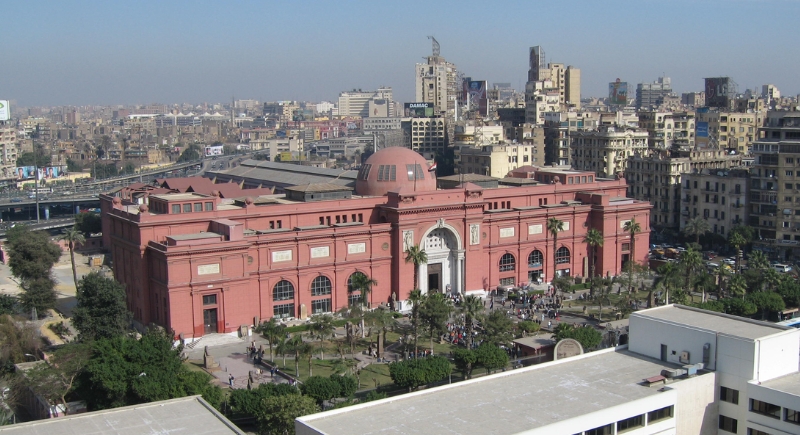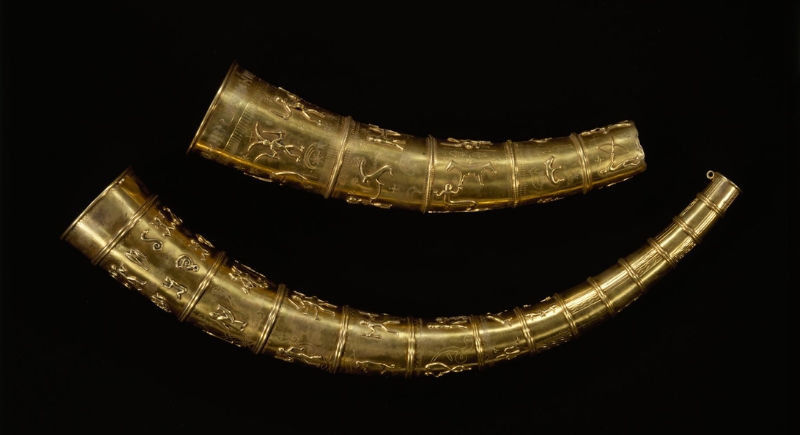A Priceless Egyptian Artifact Was Stolen and Melted Down for Just $4,000
At Cairo’s Egyptian Museum, a 3,000-year-old bracelet vanished from a locked safe in the conservation lab. Investigators later discovered that a museum employee had stolen it and passed it through a series of small trades. The ancient treasure was eventually melted down and sold for roughly the value of a used car.
The bracelet, crafted from gold and decorated with lapis lazuli beads, belonged to Amenemope, a pharaoh of Egypt’s 21st Dynasty who ruled between 993 and 984 BC. It was uncovered in Tanis inside the tomb where Amenemope had been reburied after his first resting place was plundered. The burial was rare, one of just three intact royal burials ever found in Egypt, which made the loss of this artifact especially painful for historians.
A Museum Insider’s Betrayal

Image via Wikimedia Commons/V Manninen
Egyptian authorities reported the theft took place on September 9, 2025. The person behind it was a restoration specialist with access to restricted areas. After taking the bracelet, the employee contacted a silver trader in Cairo, who arranged its sale.
The bracelet first went to a gold dealer for 180,000 Egyptian pounds, about $3,735. The dealer quickly resold it to a foundry worker for 194,000 pounds, or about $4,000. By the time investigators intervened, the artifact had already been melted down and mixed with other scrap gold to form ordinary jewelry.
Security footage later surfaced showing a bracelet being cut in two, though authorities could not confirm if it was the stolen piece.
A Loss With Terrible Timing
The theft came to light only when museum staff began preparations for the Treasures of the Pharaohs exhibition in Rome. The bracelet’s absence was discovered during the inventory process. The timing added pressure, as Egypt was also preparing for the long-awaited opening of the Grand Egyptian Museum in Giza.
The interior ministry confirmed that four suspects were arrested and confessed to their roles in the scheme. Authorities seized the cash involved in the transactions, though recovering money hardly makes up for the cultural destruction. A specialized committee was assigned to review every artifact in the conservation lab to confirm no additional items had been taken.
Not The First High-Profile Loss

Image via Wikimedia Commons/Nationalmuseet
Egypt has dealt with major thefts before. Vincent van Gogh’s Poppy Flowers, valued at around $55 million, was stolen from a Cairo museum in 1977, recovered, then stolen again in 2010. It has yet to be found. During the political unrest of 2011, looters raided museums and sites across Egypt before sending thousands of stolen artifacts into private collections around the world.
Globally, history has suffered similar blows. Denmark’s Golden Horns of Gallehus, adorned with elaborate Nordic and Roman designs, were stolen in 1802 and melted down. A treasure belonging to Childeric I, a Frankish king, was stolen in 1831 and also destroyed. Furthermore, in England, burglars stole Maurizio Cattelan’s solid gold toilet artwork in 2019. Authorities believe it, too, was melted and sold.
A royal bracelet that survived for more than three millennia ended in a furnace within days. The pharaoh’s bracelet now exists only in excavation records and photographs.